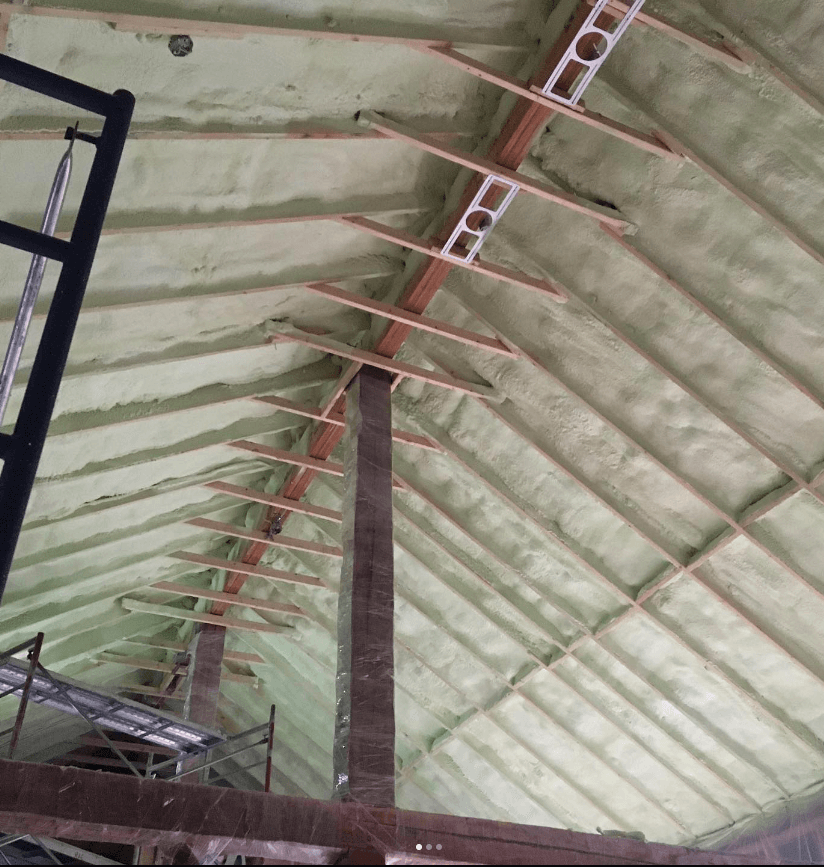Unvented building assemblies are a modern construction technique that has been gaining popularity in recent years. Unlike traditional vented buildings, which allow air to flow freely through the attic and walls, unvented buildings create an airtight envelope that is sealed against the outside elements. This article will explore five reasons why unvented building assemblies are the best choice for building in Ontario, and why spray foam insulation is the best option for creating an airtight seal.

- Improved Energy Efficiency
One of the primary benefits of unvented building assemblies is improved energy efficiency. By sealing the building envelope against the outside elements, unvented buildings can reduce the amount of heat loss and air leakage that occurs. This means that the building requires less energy to maintain a comfortable indoor temperature, which can result in significant energy savings over time. According to a study by the National Research Council of Canada, unvented attics can reduce heat loss by up to 50% compared to vented attics.
In Ontario, where the winters can be cold and harsh, energy efficiency is particularly important. By reducing heat loss and air leakage, unvented buildings can help to keep energy costs down and reduce the carbon footprint of the building.
- Improved Indoor Air Quality
Another benefit of unvented building assemblies is improved indoor air quality. Because the building envelope is sealed against the outside elements, there is less opportunity for pollutants, allergens, and other contaminants to enter the building. This can be particularly beneficial for people with respiratory conditions or allergies.
In addition, unvented buildings can be equipped with a mechanical ventilation system that provides fresh air to the building. This ensures that the indoor air quality remains high, even in a tightly sealed building envelope.
- Reduced Risk of Moisture Damage
Moisture damage is a common problem in traditional vented buildings, particularly in humid climates like Ontario. Moisture can enter the building through the vents and can cause damage to the insulation, framing, and other components of the building. This can lead to mold growth, rot, and other issues that can compromise the structural integrity of the building.
Unvented building assemblies are designed to prevent moisture from entering the building envelope. By creating an airtight seal, moisture is unable to penetrate the insulation or other components of the building. In addition, unvented buildings can be equipped with a vapor barrier that helps to prevent moisture from entering the building from the ground.

- Improved Durability
Because unvented building assemblies are designed to prevent moisture from entering the building envelope, they can be more durable than traditional vented buildings. Moisture damage is one of the primary causes of building failure, and by reducing the risk of moisture damage, unvented buildings can last longer and require less maintenance over time.
In addition, unvented buildings are less susceptible to damage from pests and other animals. Because the building envelope is sealed against the outside elements, there is less opportunity for pests to enter the building and cause damage to the structure or insulation.
- Easy to Retrofit
One of the benefits of unvented building assemblies is that they can be easily retrofitted onto existing buildings. This can be particularly useful for older buildings that were constructed using traditional vented building techniques. By retrofitting the building with an unvented assembly and spray foam insulation, the building can be upgraded to a more energy-efficient and durable structure.
